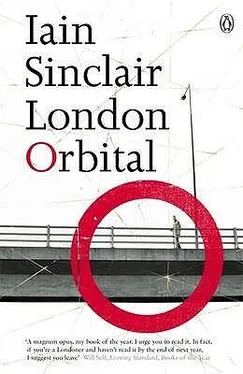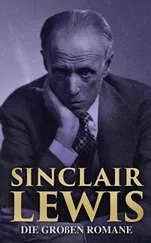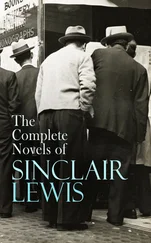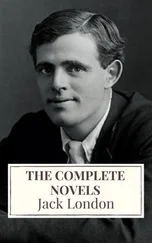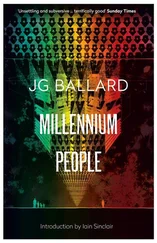Lakeside is not for walkers. We don’t hang around. It’s exhausting, having your ghost-soul stolen by CCTV cameras, stolen and stored, time-coded: to keep you where you are. ‘Once you’ve been to Lakeside, you’ll return again and again!’ That’s the vampire promise. ‘Something for all tastes and ages.’ Something for 800-year-old, plasma-gorging Transylvanian aristocrats. ‘Lakeside at night… it’s magical!’
*
It was a relief to get back inside the M25, to the lost village of Aveley, the Mardyke Way and the Mardyke Valley. Ground so proud of its obscurity that some comedian felt obliged to erect a noticeboard, pin a map (gouged by Stanley knives), set an agenda. The sodden Mardyke Way was unwritten, forlorn. Eco-bureaucrats smeared it with their feelgood fictions: ‘A secret landscape of classically flat flood plains bounded by ancient woodland on all sides.’
Which interprets as: pylons, irrigation ditches, scrub, damp cattle. Bounded by the ‘ancient’ Purfleet Arterial Road and the ‘classically flat’ M25, this country was so sad that nobody had the heart to exploit it.
Burnt-out cars form a causeway across the swamp. A man in a yellow jacket is filling in forms. An old bath, with salvageable taps intact, provides a trough for imaginary horses. This is one of those days when the rain comes down steadily and softly, so that you can’t quite be bothered to dig your coat out of the rucksack. Then it pours. You stop. And just as you wriggle into the coat (or, in Renchi’s case, the waterproof trousers), the sun breaks through. A pale rainbow over drowned Essex. Teasing us, leading us on.
Lakes, dog walks, public golf courses. In theory, on paper, this is a recreational zone: Thames Chase, a ‘Community Forest’. Today, the community can’t be arsed. Wood gatherers and charcoal burners stay at home with their feet up. A very wet beast, a hairy greyhound thing, a near-lurcher, plunges into one of the lakes and then shakes himself over us. The owner isn’t sure where the path goes, nobody has put that question before. Ever.
The next storm blows my umbrella inside-out, rips off the multicoloured canvas. I bury the naked staff in a hedge. I like the idea of golf umbrellas, abandoned around the road, beginning to flower. Like the Glastonbury thorn.
Public golfers, as we have come to expect, are friendly. After they’ve spent an hour or two hacking lumps out of the Thames Chase, watching balls fly backwards in a hurricane, they’re ready to chat. They dress down, these old boys: as for a DIY session in a garden shed (baggy cardigan, flannels, comfortable shoes). They point out a hut where anyone with loose change can buy coffee and a bun. If we keep going, heads down, in a northerly direction, we’ll find a Green Way.
The brochure confirms the tale: ‘Greenways link the towns to the forest. Some of them will be parks that you can walk and relax in; others will simply be car parks.’ That’s the problem, differentiating. ‘Arts and crafts, planting trees and hedges, are just some of the things we want to see more of.’
Green Lane, when we achieve it, is a ‘Private Road’. An unsanctioned car park for bombed vehicles. A pastoral Beirut. COUNCIL IS AWARE. A yellow notice taped to the wing of a torched Dagenham multiple. Highway carrion have removed the wheels, windows, numberplates and door handles. Welcome to the Empty Quarter of Nicholson’s Greater London Street Atlas.
At Corbets Tey, we admire the pargeting and think of Marc Atkins. It might be a moulded shield or an entire wall. The iconography of Essex pargeting is a topic we’re too wet to debate. Oak trees, stags, horsemen: the confederacy of the forest. Wet plaster ornamentation that proves we’re on the right track. The pull now is towards Epping Forest; the motorway, even when it’s in full view, is redundant. Thames Chase publicists are frantic to keep you occupied. Birdwatching, orienteering, trim trails, kite flying, crazy golf, windsurfing, jet skiing, karting, sauna-soaking: they’ve got them all. These activities may be invisible to the untrained eye, but the drowned fields of the Mardyke Valley are the English Yosemite National Park. A forest of conceptual trees that must, one day, carry Epping to Purfleet. Hence the stucco panels, the impressed trefoils and stars. A coded trail for wood fetishists.
The immediate question is: will they let us into the pub? We’re not wet; we’re soused, deluged, bedraggled. Colour has run. We’re blue. We look like something rescued from the North Sea and left floundering on the deck.
No problem. Corbets Tey is twinned with H.P. Lovecraft’s Innsmouth (‘blasphemous fish-frogs of the nameless design’). Locals with phosphorescent complexions, neck-breathers, welcomed us: as warm-blooded novelties. Give them credit, they didn’t flinch when Renchi stripped off his outer layers and wrung out his thick red socks.
We gnaw at very dead plaice and convulsed scampi. Blind-tested, all the varieties of fishmeat on offer would be uniformly flavourless. A grit of breadcrumbs dressing partially de-iced sog. Sachets of salad cream and tomato ketchup add zest to lumpen wedges of saturated potato. The wedges have a metallic aftertaste. Like something you’d spit out in a dentist’s surgery.
While Renchi’s kit steams on the old-fashioned radiator, we settle on Upminster as our destination. The end of the District Line. And therefore a part, however remote, of London. Termini are mysterious places. You want to see where the rails die. It’s like reaching the ultimate fold in the map, the final footprint of the known world.
Renchi, so he says, is reading Gaston Bachelard: The Poetics of Space. This is a coincidence of sorts, because I’m not reading The Poetics of Reverie (by the same author); even though I have a copy by my bed. The title was appealing. But the print was too tight. I couldn’t get past the thicket of green ink annotations left by a previous owner. ‘The night has no future.’ It’s like having a smart aleck digging you in the ribs. ‘Reverie is a manifest psychic activity. It contributes documentation on differences in the tonality of being.’
Reverie is the best response to Empty Quarter Essex, something less than trance. Landscape floats. It is there to be seen from passing cars, not to be experienced at first hand. Essex is better remembered than known. The book I’m really reading is Roger Deakin’s Waterlog (A Swimmer’s Journey through Britain). Deakin left out Mar Dyke and the River Ingrebourne. Lido and lock, his own moat, channel and quarry, he dipped and plunged and thrashed. He lay on his back and drifted. But no London circumnavigation (Lea, Colne, Darent, Wey) was attempted. London’s watery dreaming is untapped. Nothing ventured at the hinge of town and country. He does enjoy a circuit of pools within the city and the suburbs, but that’s not the same.
Bundles of papers, saved from the damp in plastic folders, are produced by Renchi. Who has been tracking the ground we are covering on the Net. He has accessed: ‘An Essex Mystery’. Peter Fox of Witham, an enthusiast for ‘the truly excellent ales brewed by Mr Ridley’, has located three Essex pubs, all called ‘The Compasses’, in a dead-straight line. ‘The 4th pub called The Compasses creates a circle and points to an ancient centre of Templar activity. Other strange coincidences. Geomancy, Masons, Templars and the Peasants Revolt (1381) could all be linked.’ And linked, inevitably, to Danbury Hill (‘considered as the highest eminence in Essex’). Danbury Church is dedicated to St John the Baptist, ‘patron saint of the Templars.’ Fox notes, as do all the Net dowsers, that ‘there are Saint-Clere (Sinclair) knights buried in the church’.
Renchi has further evidence, photocopies from topographical guides in his father’s library. While he digs them out, I run my own alignment triple: Danbury, the Kelvedon Hatch nuclear bunker (captured farmhouse), Tottenham Hotspur FC’s football ground at White Hart Lane. That’s the real Essex: Templar/Secret State/footy.
Читать дальше
